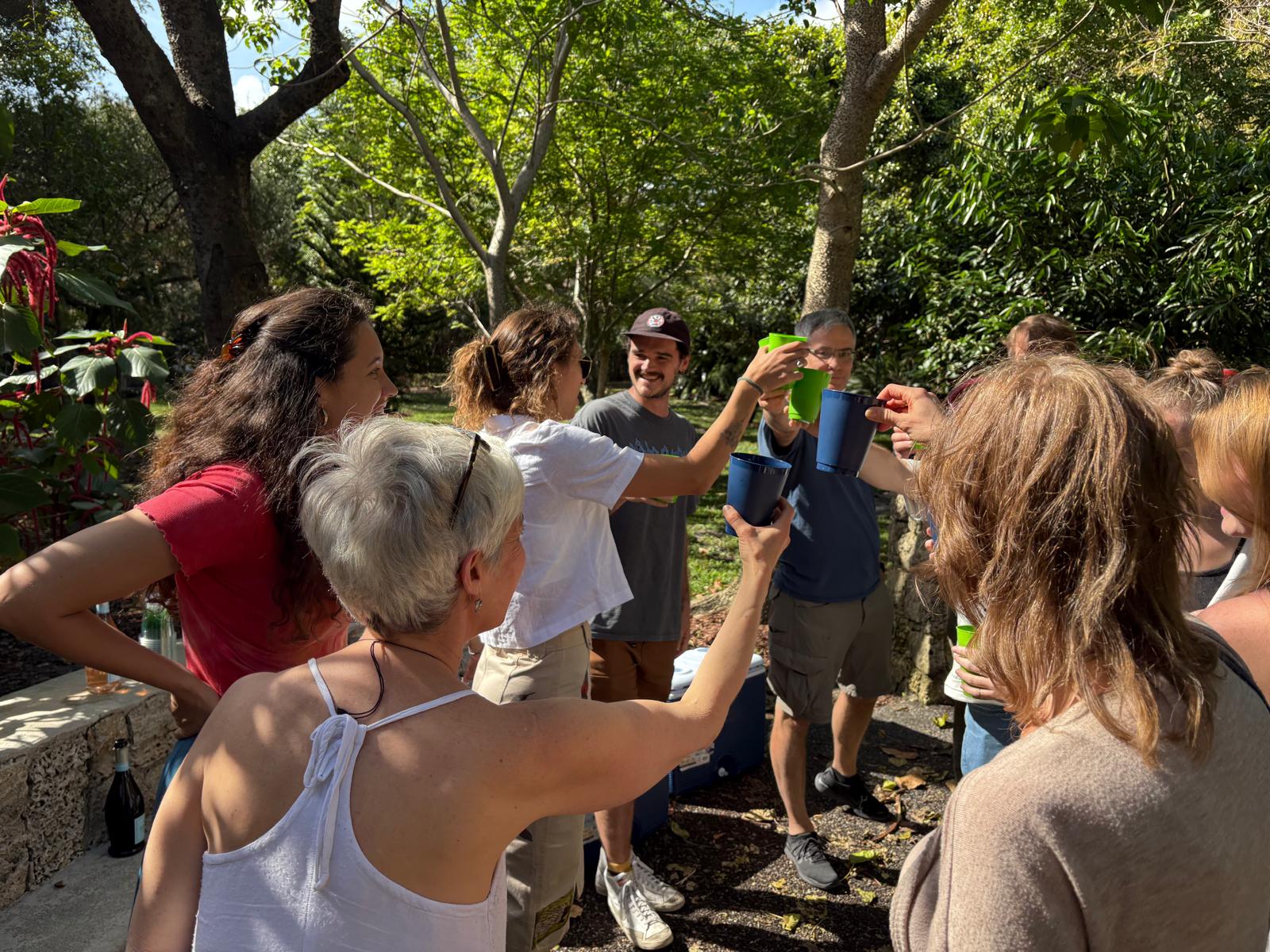New publication: Exploring the vertical profile of internal tree stem damage
Written on May 2nd , 2025 by Abbey Yatsko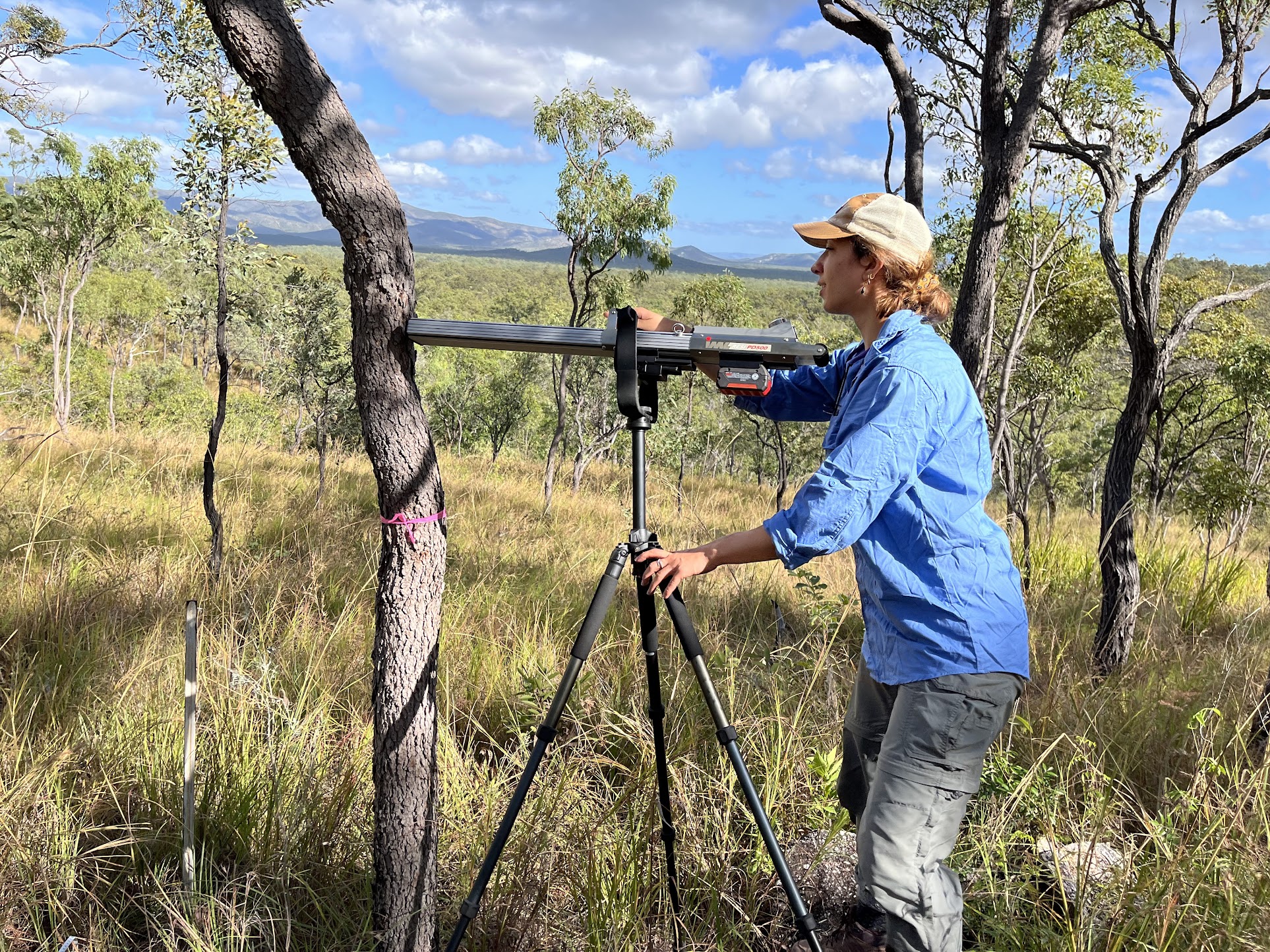
My new paper out in Functional Ecology is the lastest and the last of the internal stem damage trilogy. I collected this data in my first Ph.D. fieldwork campaign back in June 2022, and I have to give a special shoutout to Michaela for her fieldwork help. At the time I was mentoring Michaela as an NSF REU student, and she was a wonderful assistance for measuring hollow trees at our savanna field sites. Now she’s even doing a Ph.D. of her own!
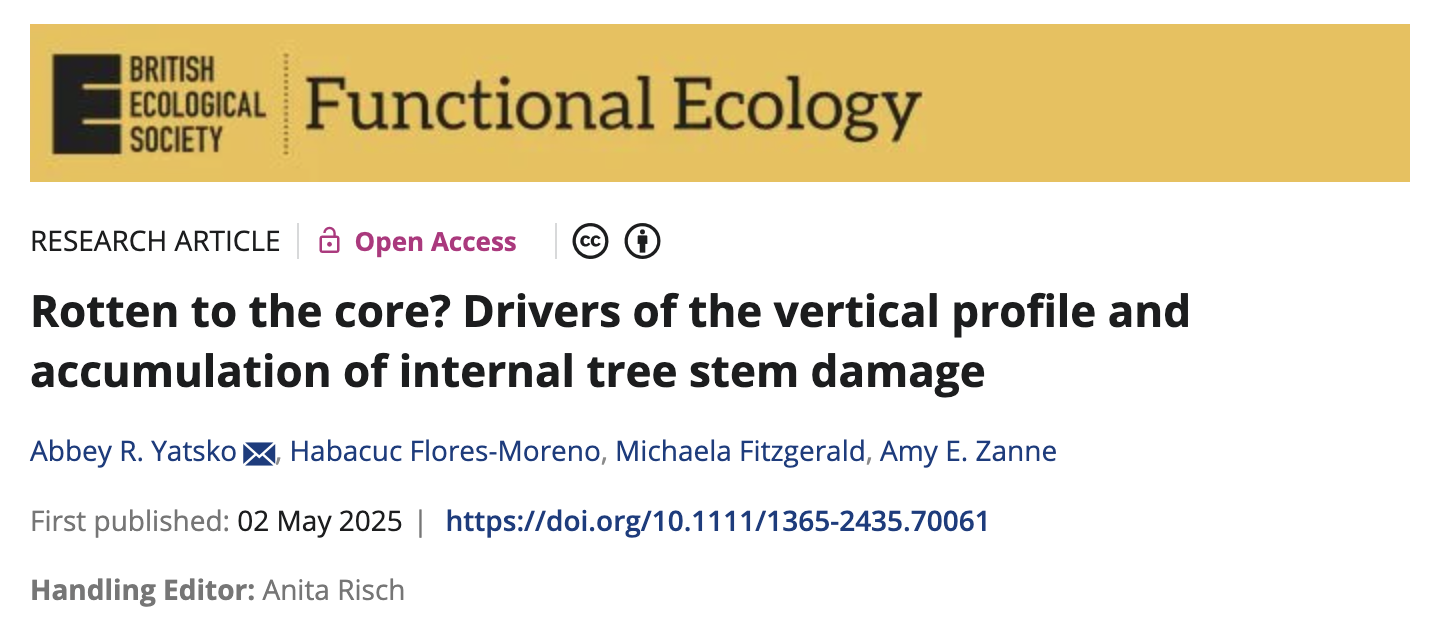
My co-author Haba and I carried out an internal stem damage study back when I was an NSF REU student in 2019 (check it out here), measuring damage at a single point 1.3 meters off the ground. In this study, I wanted to answer the question: is a single measurement of damage representative of the entire tree trunk? Also, I wanted to test if external damage of the tree indicated how much damage was occurring internally.
To resolve this knowledge gap we used a special resistograph drill to measure the vertical profile of internal stem damage, from about 50 centimeters off the ground to about 2 meters. We found that more wood at the bottom of the tree was damaged, but the ratio of damaged to undamaged wood was maintained through the vertical profile. Overall, the single measurement was sufficient to characterize the damage state of the lower tree stem.
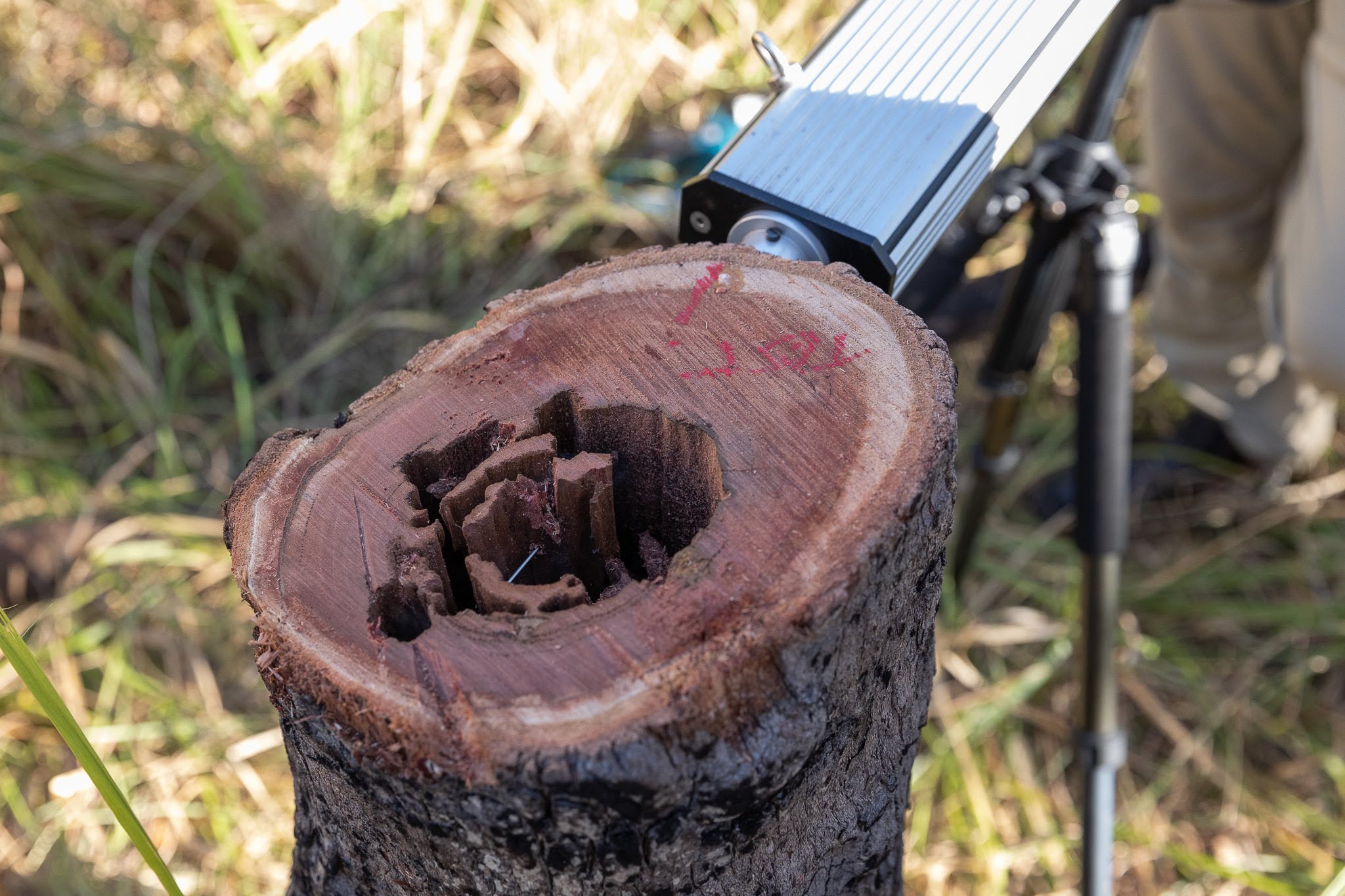 The resistograph drill in action.
The resistograph drill in action.
Also, we found that external termite damage predicted more internal damage, and larger, denser trees were more likely to be termite damaged on the outside. So, termites are an important indicator of and actor in the internal stem damage process!
That wraps up my research on hollow trees… at least for now. Check back for further developments on the hollow tree space!
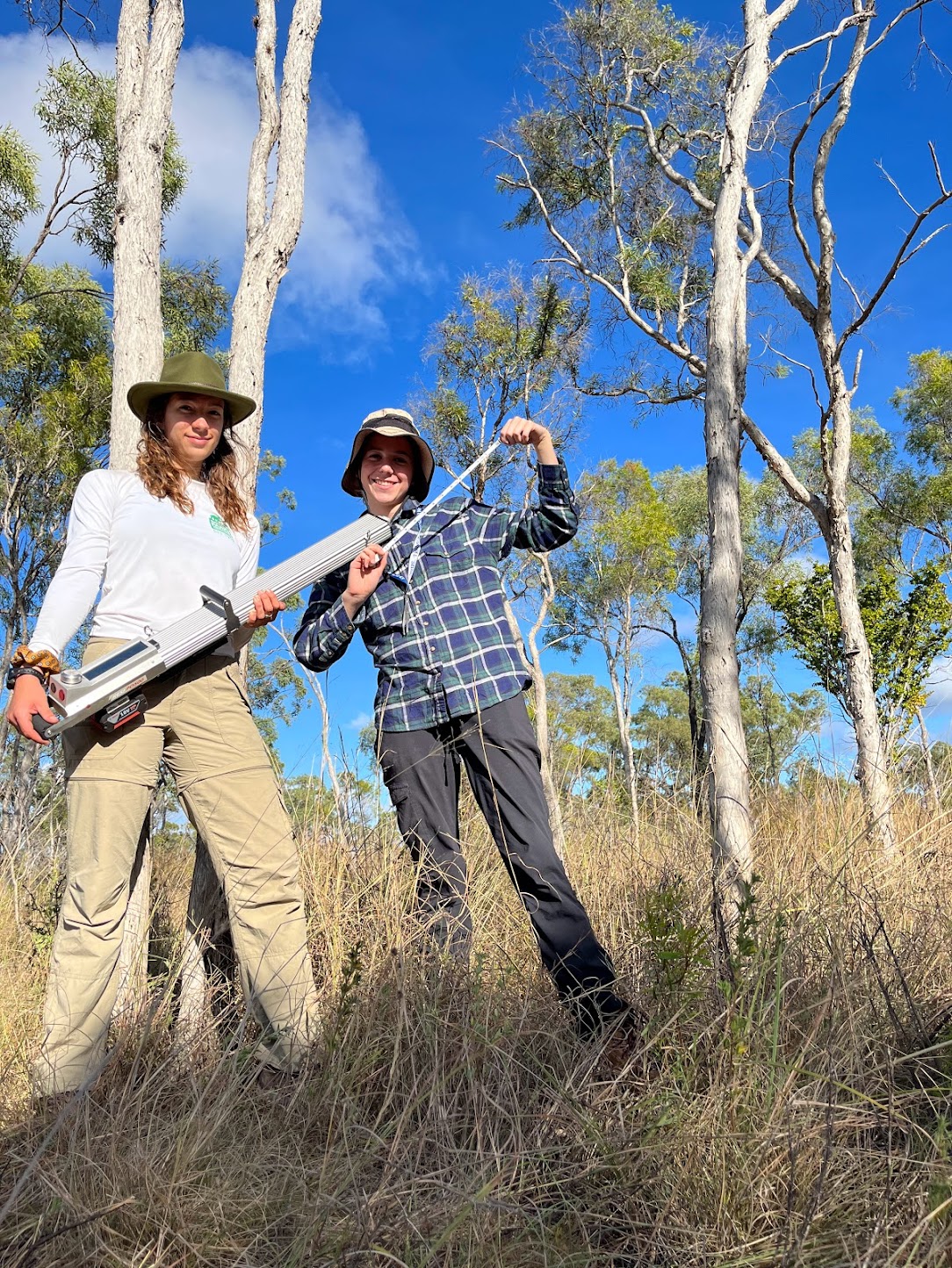 Michaela and I hard at work measuring tree hollows with the resistograph drill.
Michaela and I hard at work measuring tree hollows with the resistograph drill.
